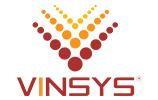MS-300: deploying Microsoft 365 Teamwork Course
After completing this course, students will be able to:
- Configure SharePoint Site Collections.
- Manage site collection storage limits.
- deploy OneDrive for Business s1nc client.
- Use Group Policy to control OneDrive s1nc client settings.
- Manage external sharing for data in SharePoint Online and OneDrive for Business.
Loading...
Audience
This course is for the Microsoft 365 teamwork administrator role. The role is responsible for configuring, deploying, and managing Office 365 and Azure workloads that focus on efficient and effective collaboration and adoption. They manage apps, services, and supporting infrastructure to meet business requirements. The administrator is aware of and can differentiate between products and services but may not directly manage each product or service.
The Teamwork administrator must be able to deploy, manage, migrate, and secure SharePoint (online, on-premises, and hybrid), OneDrive, and Teams.
The Teamwork administrator has a fundamental understanding of integration points with the following apps and services: Office, Power Apps, Flow, Yammer, Microsoft Graph, Stream, Planner, and Project. The administrator understands how to integrate third-party apps and services including line-of-business applications.
Eligibility Criteria
Learners should start this course already having the following skills:
- Experience with Windows PowerShell.
- Basic understanding of Active Directory and Azure AD.
- Basic understanding of mobile device management, and alternative operating systems (Android and macOS).
Course Outline
Module 1: Plan and Configure SharePoint Site Collection
This module is all about planning, configuring, and managing SharePoint site collections. It discusses how SharePoint administrators use SharePoint Admin Center to manage the lifecycle of site collections in your organization.
Lessons
- SharePoint Online Overview
- Configure site collection
- Manage site collection
After completing this module, students will be able to:
- Explain the site collection concepts.
- Create site collections.
- Manage site collection storage limits.
- Create and configure SharePoint hub sites.
- Describe how to use SharePoint Admin Center to manage site collections.
Module 2: Configure and Manage OneDrive for Business
This module explains how to plan the deployment of OneDrive for Business. It discusses different approaches to deploy OneDrive for Business based on different scenarios. It also introduces the capabilities to manage content in OneDrive for Business.
Lessons
- OneDrive for Business Overview
- Deploy OneDrive for Business
- Manage OneDrive for Business
After completing this module, students will be able to:
- Manage users’ storage limits.
- Configure data retention in OneDrive for Business.
- Use Group Policy to control OneDrive sync client settings.
- Describe different methods to deploy OneDrive for Business.
- Describe how to use OneDrive Admin Center to manage One Drive for Business.
Module 3: Sharing, Security, and Monitoring in SharePoint and One Drive
This module is focused on sharing, security, and monitoring in SharePoint and OneDrive. Specifically, we discuss planning and managing external sharing as well as access control in SharePoint and OneDrive. It also discusses how to use Office 365 Admin Center to monitor the activities in SharePoint online and OneDrive for Business.
Lessons
- Manage to share in SharePoint and OneDrive
- Manage security in SharePoint and OneDrive
- Monitor SharePoint and OneDrive
After completing this module, students will be able to:
- Describe the external sharing in SharePoint Online and OneDrive for business.
- Describe the options to manage device access to SharePoint Online and OneDrive for business.
- View Office 365 reports that measure SharePoint Online and OneDrive for business usage.
Module 4: Course Conclusion Lab
Creating and configuring site collection
Prerequisite
Learners should start this course already having the following skills:
- Experience with Windows PowerShell.
- Basic understanding of Active Directory and Azure AD.
- Basic understanding of mobile device management, and alternative operating systems (Android and macOS).
Course MS-300T02-A: Managing SharePoint Online
Module 1: Manage User Profiles and Apps This module is about user-profiles and customization in SharePoint Online. It discusses manage User Profiles in SharePoint Online. It also describes how to use the App Catalog to make custom business apps available for your SharePoint Online.
Lessons
- Manage User Profiles
- Plan and configure customizations and apps
After completing this module, students will be able to:
- Describe how to configure user profile properties.
- Describe how to manage audiences
- Describe how to use the App Catalog to make custom apps.
Module 2: Plan and Configure Managed Metadata and Business Connectivity
This module is about the Managed Metadata and Business Connectivity Services. It introduces the concepts of managed metadata as well as the process to import term sets. It also describes how to manage Business Connectivity Services and create external list. Lessons
- Plan and configure Managed Metadata
- Plan and configure Business Connectivity Services (BCS) and Secure
After completing this module, students will be able to:
- Describe the functions of the Managed Metadata.
- Create and manage term groups, term sets, and terms
- Explain the key components of a BDC model.
- Describe the high-level architecture of BCS.
- Explain the purpose of the Secure Store Service.
Module 3: Plan and Configure Search
This module is about enterprose search service application. It provides details on planning and configuring content sources, crawl schedules, and crawl rules. It also discusses how to provision search management of a range of search components, such as Query Rules, Result Types and Display Templates.
Lessons
- Overview of search in SharePoint Online
- Manage search
After completing this module, students will be able to:
- Describe the difference between modern and classic search experiences.
- Describe how to plan and configure content sources.
- Describe how to manage the search schema.
- Explain the use and deployment of query rules.
- Explain the use and deployment of result source.
Module 4: Course Conclusion
Lab: Import term sets
Prerequisite
Learners should start this course already having the following skills:
- Experience with Windows PowerShell.
- Basic understanding of Active Directory and Azure AD.
- Basic understanding of mobile device management, and alternative operating systems (Android and macOS).
Course MS-300T03-A: Enabling Microsoft Teams for Collaboration
Course Outline Module 1: Plan a Microsoft Teams Deployment
This module is all about planning for Microsoft Teams. It discusses how users will authenticate to use Teams to best practices for deploying teams in your organization.
Lessons
- Getting Started with Teams
- Deploying Teams
- Teams and Channels
- Authentication and Access
After completing this module, students will be able to:
- Explain how Teams interacts with SharePoint Online, Exchange Online, and OneDrive.
- Describe the different Teams clients and how they can be used.
- Describe how to prepare your network for Teams traffic.
- Describe best practices steps to deploy Microsoft Teams.
- Define objectives, risks, and key results for your Teams deployment.
- Describe the different capabilities of the different roles in Teams.
- Describe how teams and channels are used to organize content in Microsoft Teams.
Module 2: Configure Microsoft Teams
This module explains how to set up and configure Microsoft Teams. It discusses the use of tabs, bots and connectors in Teams. It introduces concepts related to managing meetings in Teams.
Lessons
- Set up Microsoft Teams in Office 365
- Apps in Microsoft Teams
- Meetings in Teams
Lab : Configuring Microsoft Teams
After completing this module, students will be able to:
- Set up Microsoft Teams in Office 365.
- Describe and administer apps in Microsoft Teams.
- Utilize bots and tabs within Teams.
- Describe and use connectors in Teams.
- Describe meeting concepts in Teams.
- Describe the devices available to facilitate meetings in Teams.
Module 3: Manage the Teams Environment
This module is focused on managing Microsoft Teams. Specifically, we discuss security and compliance as well as privacy and data governance. While this course does not cover voice calling explicitly this module discusses quality of service-related topics.
Lessons
- Privacy and Governance
- Security and Compliance
- Management and Reporting
Course MS-300T04-A: Enabling Office 365 Workloads for Collaboration
Module 1:
Evaluating Office 365 Collaboration Workloads Office 365 includes many features that can be used to build collaboration solutions. The core component for building collaboration solutions is SharePoint Online, but other features such as Yammer and Stream can also be used. You need to understand how SharePoint Online and other Office 365 features compare with third-party solutions when designing your solution. You also need to be able to analyze business requirements to ensure that your solution meets business needs.
Lessons
- Evaluating available technological tools
- Analyzing business requirements
After completing this module, students will be able to:
- Evaluate available technological tools.
- Analyze business requirements.
Module 2: Planning and Developing Governance Successful deployment and management of information technology (IT) requires a consistent and well-defined methodology. Governance is the processes that you follow to define the policies and procedures for deploying and managing IT, including collaboration solutions. You need to consider governance for application management, user adoption, change management, and monitoring.
Lessons
- Developing Governance for digital transformation
- Implementing application management governance
- User adoption and change management
- Monitoring collaboration solutions
After completing this module, students will be able to:
- Develop governance for digital transformation.
- Implement application management governance.
- Manage user adoption and change.
- Monitor collaboration solutions.
Module 3: Managing Office 365 collaboration work loads In Office 365, there are many apps and features that you can use for collaboration. You need to understand how to configure these apps and features to meet the needs of your organization. In this module, you will learn about management of Office 365 groups, Power BI, Microsoft Stream, Yammers, Flow, and PowerApps.
Lessons
- Managing Office 365 collaboration workloads
- Managing Stream capabilities
- Managing Yammer capabilities
- Managing Flow and Power Apps capabilities
After completing this module, students will be able to:
- Manage Office 365 collaboration workloads.
- Manage Stream capabilities.
- Manage Yammer capabilities.
- Manage Flow and Power Apps capabilities.
Prerequisites:
Learners should start this course already having the following skills:
- Experience with Windows PowerShell.
- Basic understanding of Active Directory and Azure AD.
- Basic understanding of mobile device management, and alternative operating systems (Android and macOS).
Choose Your Preferred Mode

ONLINE TRAINING
- Instructor-led Online Training
- Experienced Subject Matter Experts
- Approved and Quality Ensured Training Material
- 24*7 Leaner Assistance And Support

CORPORATE TRAINING
- Customized Training Across Various Domains
- Instructor-Led Skill Development Program
- Ensure Maximum ROI for Corporates
- 24*7 Learner Assistance and Support
FAQ’s
Why Choose Vinsys As Your Learning Partner?
Vinsys guides you throughout your certification journey and focuses on practical skill development through exposure to Vinsys labs for a real-time learning experience. We have the best Microsoft-certified instructors and elaborative course material that ensure success in the certification exams.
Why Vinsys

Reviews
It is a very good experience to study with MS-300 exam braindumps. Valid and easy! And I passed my MS-300 exam. Thanks for all your great help!


